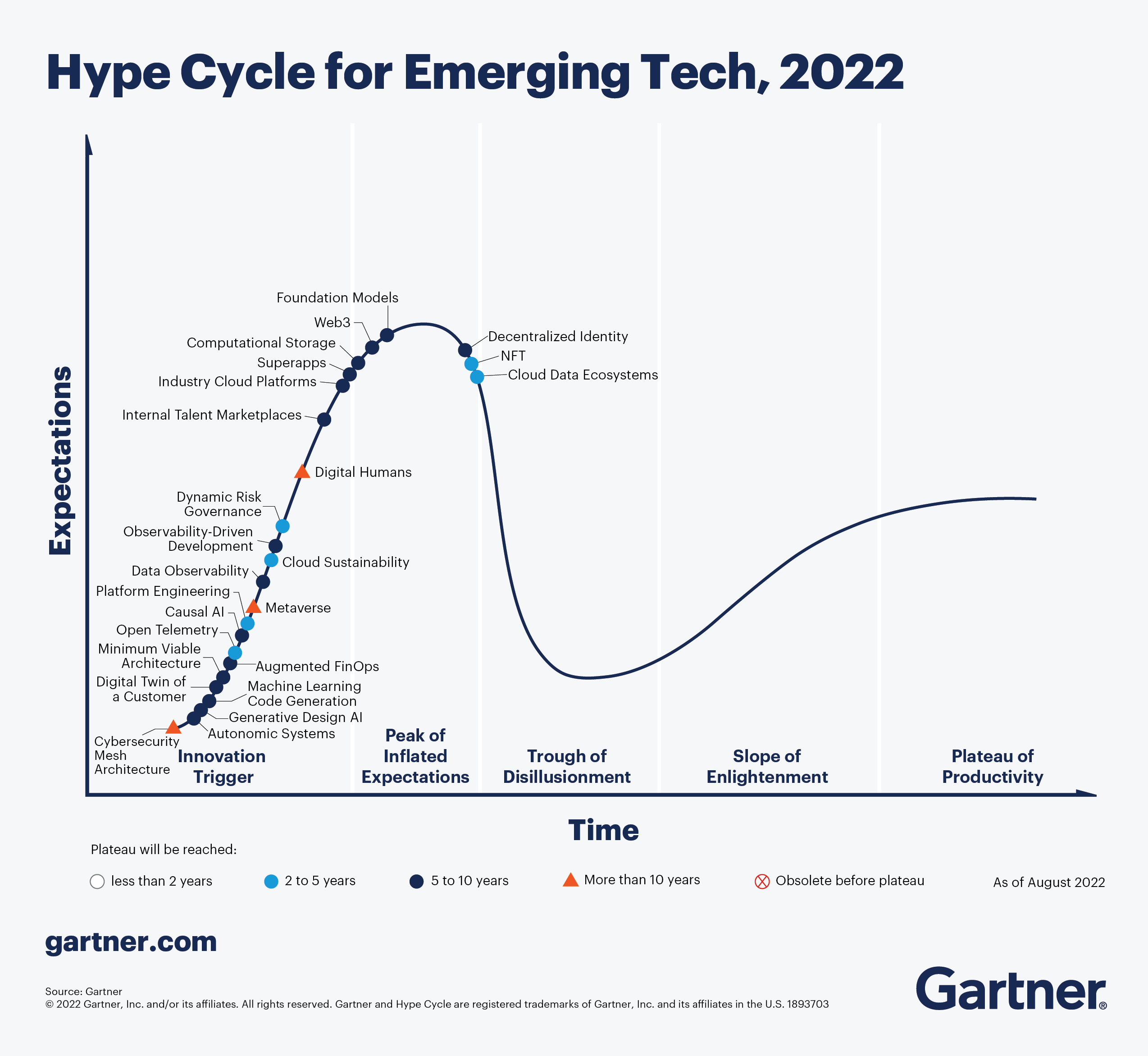Hype curve
Developed by Gartner, the hype curve is a tool to understand how the market will react to emerging technologies in the short term.

The initial innovation will trigger interest from the market (see: Innovation is not the only driver for success). This is also what happens in the initial stages of the Healthech Innovation Cycle.
New technologies will trigger speculation on their possibilities, creating an onward trend on expectations, on the kind of problems they'll be able to address. At some these expectations will not be met, and there'll be a downward trend in interest.
After this rocky period, and with managed expectations, the interest will peak up again until it reaches an asymptote, called the plateau of productivity.
When jumping at a new technology, it is important to be sure one is in an upward cycle. Being a bit late to market may be devastating for a project (see: first-mover advantage).
I wonder how universal this cycle is, and whether there are counter-examples.
I also think the hype curve can be used at a personal level. I have also had ideas that looked very promising, started analysing, building, until there's a roadblock, reality sits in, there's disillusionment, until adjusted expectations allowed me to keep working.
Backlinks
These are the other notes that link to this one.
